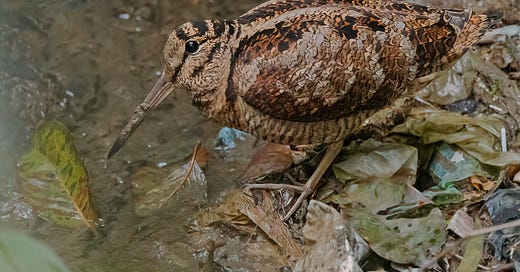“Into the deep, dark woods.” There are few more evocative phrases in the English language than this. Our reaction upon hearing this phrase is instinctive, perhaps even primal; we picture the shadowy scene immediately, and deep within us some latent fear is stirred, and a shuddering shiver descends down our spine. And for good reason. Deep, dark woods are places of renowned intrigue and myth: the localities of fairytale peril, fear, and trepidation — the place where only a few brave souls dare to tread alone. Who knows what mysteries, dangers, or terrors — wolves, witches, and monsters — we will encounter lurking within the gloomy depths of the deep, dark wood?
For the modern Englishman, this fear is rather unfounded. No terrors dwell in our tame woods: wolves have not roamed them since the last one was slaughtered in the 17th century, and none of our remaining insects, reptiles, or mammals pose a deadly threat. Nowadays, the most dangerous creature one is likely to come upon in our woodlands is a fellow man with malicious intent and the most common cause of death is a falling branch in an autumn gale. English woods thus generally evoke scenes from the quaint and harmless Brambly Hedge stories rather than the darkest and most bone-chilling of the Brothers Grimm’s folk horror tales.
Likewise, only a few of our woodlands reach an extent warranting the adjective “deep”. Dark our woods may be at times — especially pine forests in winter — but as my German wife enjoys reminding me, English woods are tiny, almost insignificant, specks on the landscape compared to the expansive primeval forests of the continent. One must be seriously deficient in skills of orientation to get lost in an English wood which rarely exceed a few hectares in extent.
There is, however, one mythical creature that dwells within our woods, though like the English gentleman, it appears to dislike woods that are too deep and too dark. Though most English woodlands contain at least two to four of these creatures, stumbling upon one is a near impossibility. This creature stalks the undergrowth in the dead of night, piercing the leaf litter with its dagger in search of its wriggling victims. To tempt its prey up to the surface, it rocks back and forth in a sinister motion, a kind of hypnotic dance that guides its victims to their death.
Expertly camouflaged, any unsuspecting walker straying off the beaten path is unlikely to see this fabled creature until it bursts out from under one’s feet at the last moment. And in reality, one is only likely to glimpse this creature when it flies at dusk over glades and meadows in a repetitive back and forth route: a strange courtship ritual called “roding”, all the while making strange croaking and grunting noises1 as it traverses the moonlit sky.
This mythical, somewhat invisible creature is the humble, harmless Woodcock (though earthworms beg to differ at “harmless”).
Keep reading with a 7-day free trial
Subscribe to Over the Field to keep reading this post and get 7 days of free access to the full post archives.





